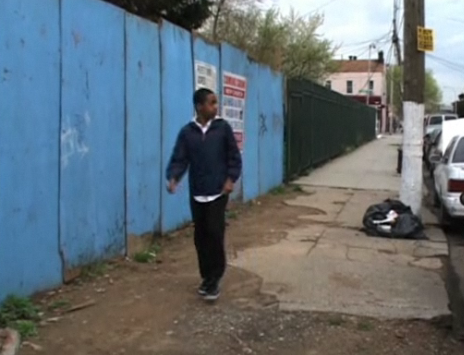In the Flatbush neighborhood, of Brooklyn, N.Y., vacant lots are so common that they become invisible. Many local residents walk right by the trash-strewn pieces of property without really seeing the spaces or wondering why they’re there.
That was true for the students at the neighborhood’s Walt Whitman Middle School. But as part of a project with New York’s Center for Urban Pedagogy (CUP) and the Brooklyn College Community Partnership, some of those kids started looking more closely at the plots of vacant land that surround them.
Working with teaching artist Douglas Paulson, the kids started asking questions about what they saw. Why are the lots filled with garbage instead of buildings, or gardens, or playgrounds? Isn’t that land worth something to somebody? How can the needs of the neighborhood be so disregarded? Who is responsible?
They took those questions to city officials, local activists, and neighborhood business owners, then made a video about what they discovered. They called it The Good, the Bad, & the Empty. Set to a soundtrack of West Indian steelband music, the video uses stop-motion animation and puppets as well as interviews to tell its story.
Paulson said in an email that the students took the lead in exploring their environment.
“It might sound clichéd, but I really learned something just by being with the students in their neighborhood,” he wrote. “I didn’t grow up in a city, and urban childhood has always been a mystery to me. In every other class I’ve taught I was the teacher, and the students were with me to learn about making and seeing art. This time, our mission was to explore their neighborhood, and I loved following their lead. I love the way they move through the city.”
Valeria Mogilevich, program manager for CUP’s youth education programs, said this and similar projects are designed to give city kids an idea of how they might be able to start fixing the problems where they live. “It’s about a shift in perception,” Mogilevich said. “We’re trying to get at the politics behind the situation and their sense of how they can influence things.”
At least one of the Walt Whitman students is thinking big. Forget about parks and community gardens, he says. He wants to see an embassy grow in Flatbush.



